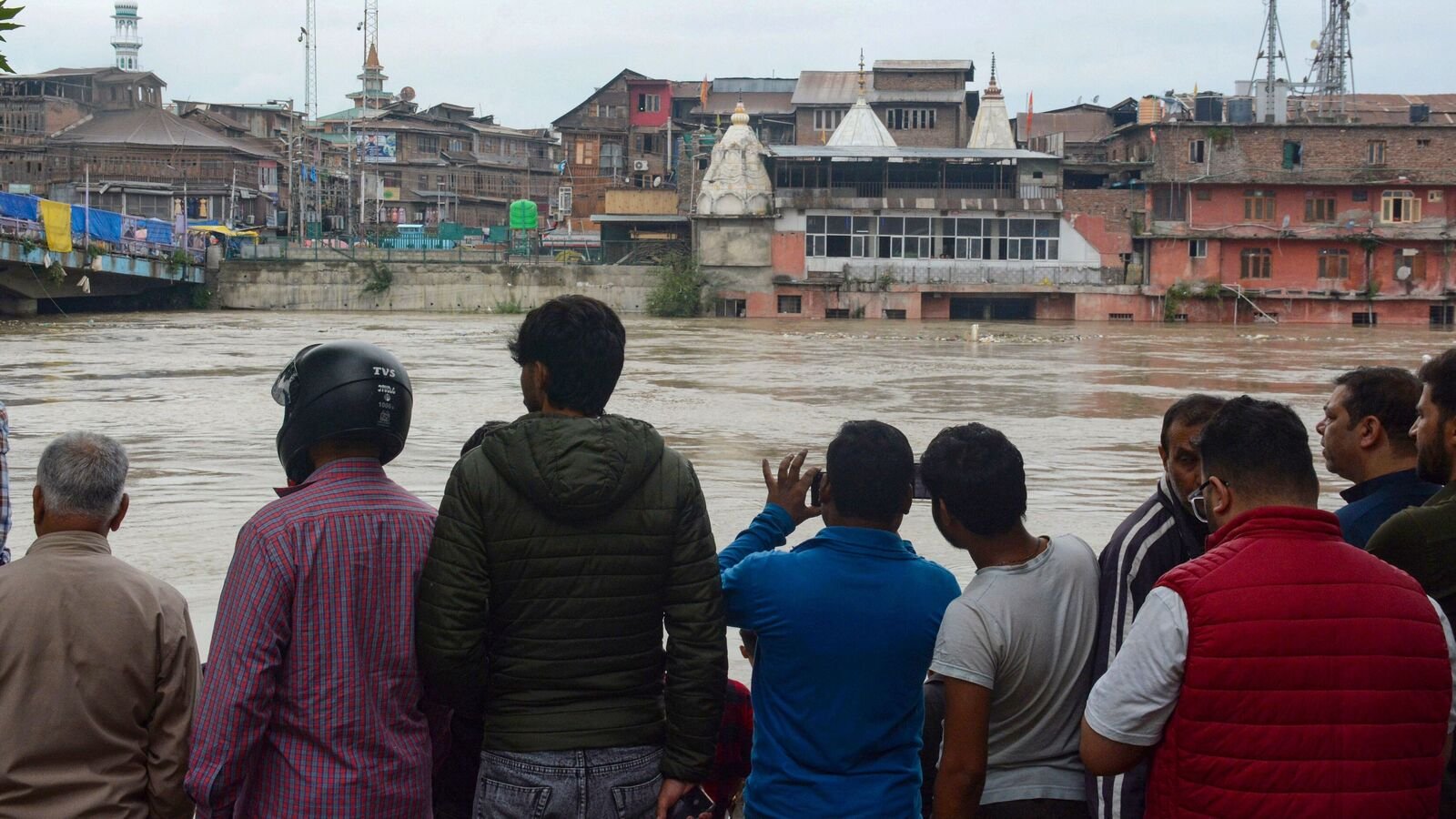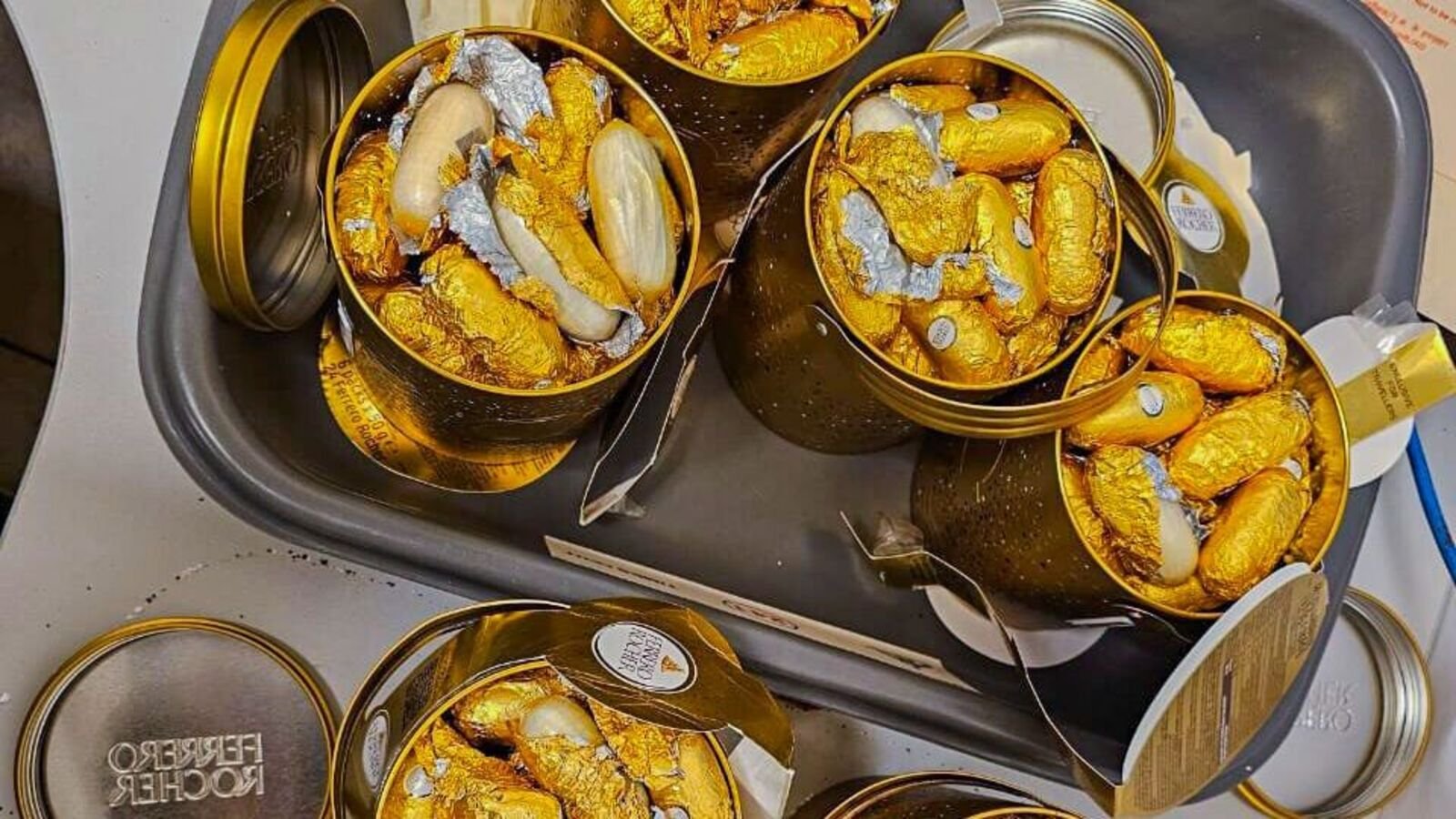Jammu and Kashmir Weather: Swelling Jhelum revives haunting memories of devastating Srinagar floods of 2014

Abdullah also shared a picture from the ravaging floods that hit Jammu and Kashmir in 2014. Incidentally, Omar Abdullah was also the chief minister of the erstwhile state then.
“Two photographs from 2014 floods & two from 2025 floods. Almost the same spot & very similar damage,” Abdullah said in a post on X.
Mobile internet, broadband services, and calling facilities remained disrupted across Jammu and Kashmir on 27 August as heavy rainfall continued to batter the Union Territory, damaging optical fibre networks at several locations.
While the Tawi River in Jammu was flowing above flood levels, the Jhelum River in Kashmir across the Jawahar Tunnel also breached the danger mark too.
As always, Rajbagh in uptown Srinagar was the first area in the city to be affected by rising Jhelum waters. On Wednesday, people were seen wading through waterlogged streets a few miles from the city centre, Lal Chowk.
For many residents, it was a déjà vu situation. Rajbagh was one of the worst-affected areas in Srinagar during the 2014 floods in Jammu and Kashmir that left over 300 people dead and thousands displaced.
In 2014, the first and second floors of the houses and hotels in Rajbagh that were packed with tourists were submerged. “I hope we don’t see what happened in 2014 again. Our house still has the flood marks in the first floor,” Nawaz Malik, a resident, recalled.
The 2014 floods in Srinagar
Much like in 2025, the erstwhile state of Jammu and Kashmir and its adjoining areas received heavy rainfall from 2 September 2014, during the last stage of the monsoon.
On 5 September, the Jhelum River in Srinagar was reported to be flowing at 22.40 feet (6.83 m), which was 4.40 feet (1.34 m) above the danger mark, and at 33 feet (10 m) above the danger mark at Sangam in Anantnag district.
On the morning of 27 August, the main Jhelum river crossed the flood-alert mark of 21 feet at Sangam in the Anantnag district and was just two feet below the flood-alert mark of 18 feet downstream at Ram Munshi Bagh in Srinagar.
In 2014, most of Srinagar’s city areas were submerged. The river Jhelum spilled over, submerging Sonwar Bagh, Shivpora,Natipora, Pandrathan, Lal Chowk, Rajbagh, Jawahar Nagar, Gogji Bagh, and Wazir Bagh neighbourhoods in the summer capital of Jammu and Kashmir.
Bemina, a suburb near Budgam, was another area worst affected by the 2014 floods. Here, too, two floors of houses were inundated with flood waters for about 20 days in September.
“I remember, phones did not work then. We had Aircel then. Today, Jio network was working. In 2014, Aircel worked. Other networks did not work. Those were horrible days. I remember my father using a boat to go out,” said Suhail Ahmad, a resident of Nundreshi Colony B – one of the colonies in Bemina – a half-an-hour drive from Srinagar airport.
What flood mitigation measures?
In his X post on Wednesday, Omar Abdullah, the chief minister, asked if any lessons were learnt from the 2014 experience.
“What, if anything, did we learn from the 2014 floods? What corrective steps were taken in the last 11 years? What flood mitigation measures were implemented since October 2014?” the CM asked, urging that the elected government of the UT seek answers because the last 48 hours have been a shocking eye-opener.
“Governments have failed. Be it the L-G or the CM, no one cares,” said a resident.
The repeated flood scares since 2014 notwithstanding, the successive administrations in the erstwhile administrations did not take up a dredging in the River Jhelum or its flood spill channels since March 2020, according to local reports quoting details procured through a Right to Information query from the Irrigation and Flood Control (I&FC) Department.
The reply shows that the Comprehensive Flood Management Plan (CFMP), sanctioned in 2015 under the Prime Minister’s Development Package (PMDP), remains far from complete, according to a report in the local daily Kashmir Observer.
Discover more from News Hub
Subscribe to get the latest posts sent to your email.






